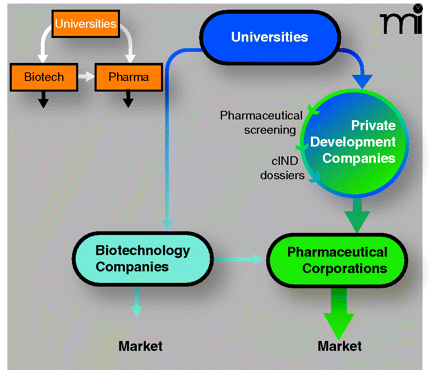
- Institution: Stanford Univ Med Ctr Lane Med Lib/Periodical Dept/Rm L109
- Sign In as Member / Individual
Private Development Companies: Transforming Academic Research into New Treatment Options for Cancer

The University/Pharmaceutical/Biotechnology axis remodeled.
Upper inset. The familiar tripartite axis, representing a pathway for intellectual property to be developed into marketable therapeutics, resulted in 1980 from Diamond v Charkrabarty, the Bayh-Dole Act, and the Stevenson-Wydler Act (see text for details). White arrows represent the flow of intellectual property; black arrows represent a pathway to market. Main flowchart. In oncology, where the commercialization of effective drugs has been sluggish, private development companies are needed to transform academic research into new treatment options that reach the market. Private development companies would utilize experienced pharmaceutical review boards to select molecules emerging from competitively funded federal research programs and subject them to rigorous regulatory-directed development programs resulting in commercial Investigational New Drug (cIND) dossiers. These dossiers could be licensed to pharmaceutical clients, facilitating a route to market.


